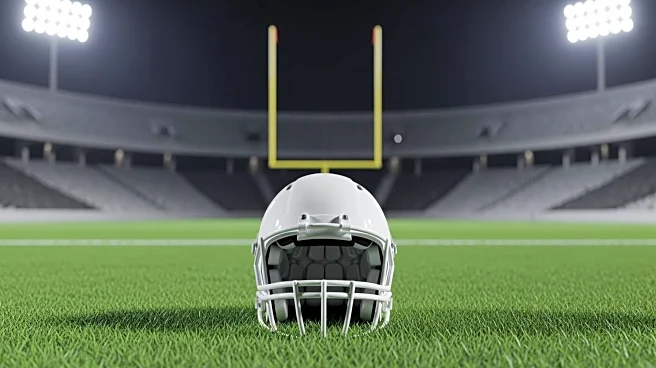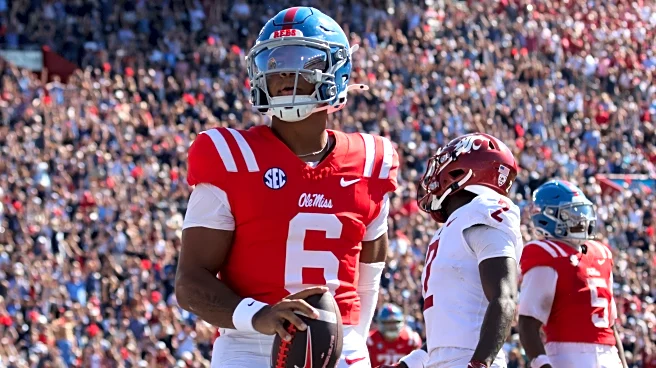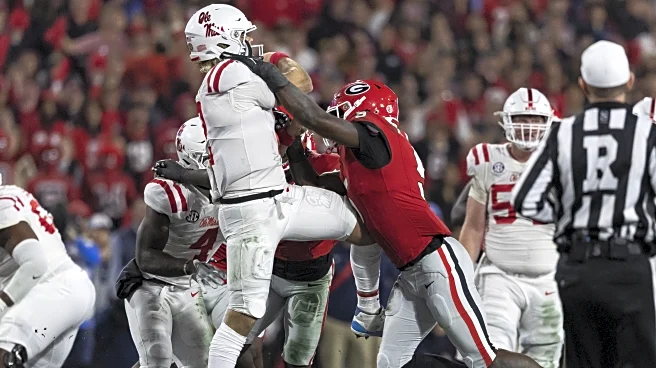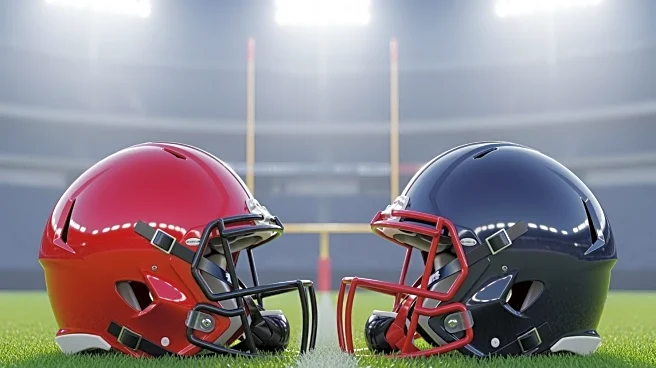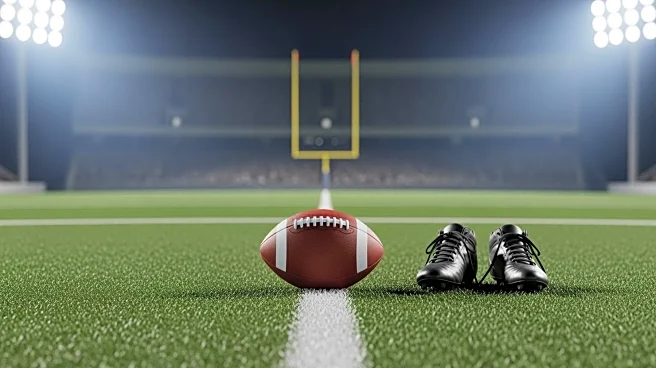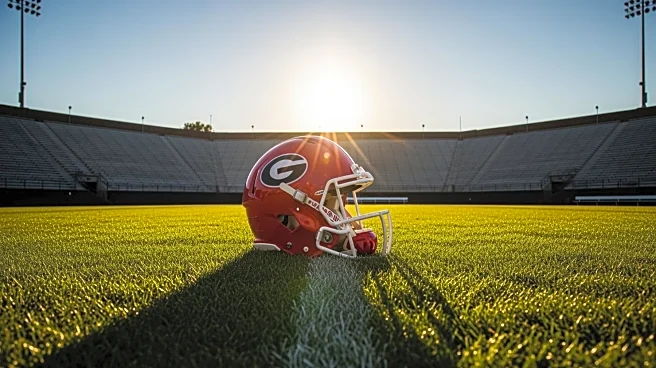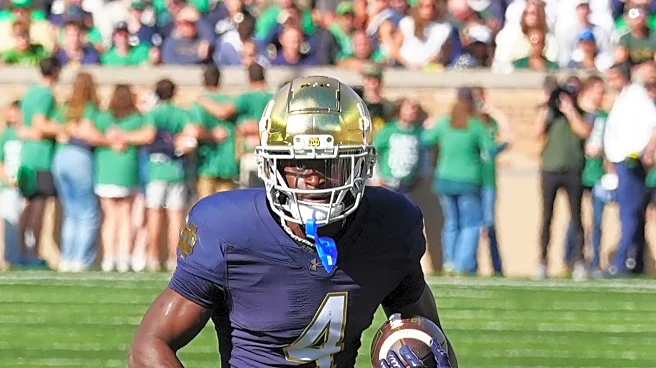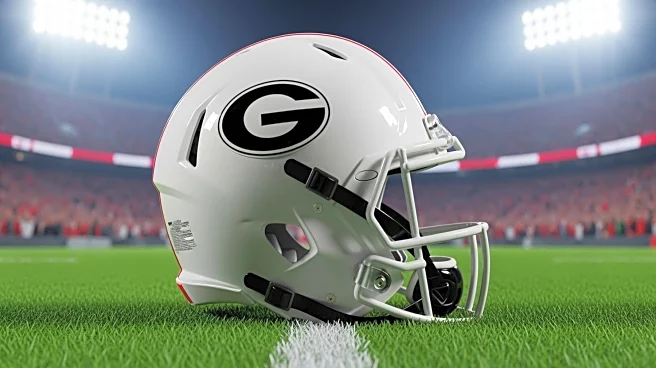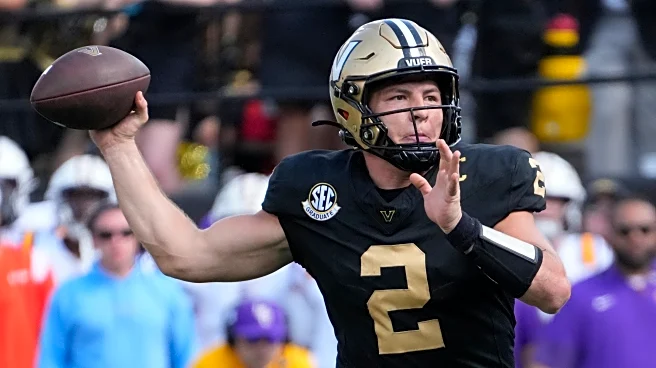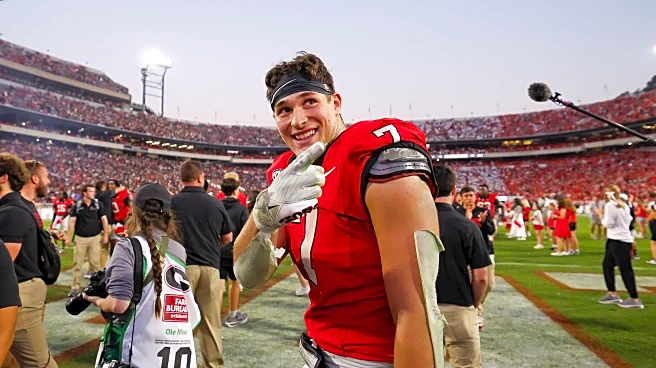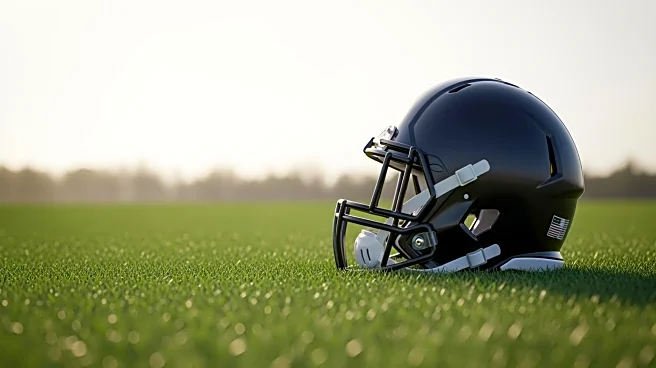What's Happening?
Georgia Bulldogs senior wide receiver Colbie Young sustained a significant leg injury during the first quarter of the team's game against Ole Miss on October 18, 2025. Young was injured after catching a 36-yard pass from quarterback Gunner Stockton, which
advanced the ball to the Ole Miss 25-yard line. Following the play, Young was seen hobbling off the field and was later taken to the locker room for further evaluation. Head Coach Kirby Smart confirmed that Young fractured one of his lower leg bones, although it is unclear whether it is the tibia or fibula. The injury is expected to sideline Young for an unspecified period, affecting the Bulldogs' offensive lineup.
Why It's Important?
Colbie Young's injury is a significant setback for the Georgia Bulldogs, as he is a key player in their offensive strategy. His absence could impact the team's performance in upcoming games, potentially altering their season trajectory. Senior wide receiver Noah Thomas has stepped in to replace Young, but the team may need to adjust their tactics to compensate for the loss. This development could influence the Bulldogs' standings in the college football rankings and affect their chances in the postseason. The injury also highlights the physical demands and risks associated with college football, raising concerns about player safety and the need for effective injury management.
What's Next?
With Colbie Young sidelined, the Georgia Bulldogs will need to rely on other players to fill the gap in their offensive lineup. Noah Thomas, who replaced Young during the game, will likely see increased playing time and responsibilities. The team may also explore strategic adjustments to maintain their competitive edge. Coach Kirby Smart and the medical staff will monitor Young's recovery closely, although no specific timeline for his return has been provided. The Bulldogs will need to adapt quickly to these changes as they continue their season, facing challenges from other teams in their conference.
Beyond the Headlines
Young's injury underscores the broader issue of athlete health and safety in college sports. It raises questions about the adequacy of current protective measures and the long-term impact of injuries on players' careers. The incident may prompt discussions on improving medical protocols and support systems for injured athletes. Additionally, it highlights the pressure on college teams to perform despite unexpected setbacks, influencing coaching strategies and player development.
